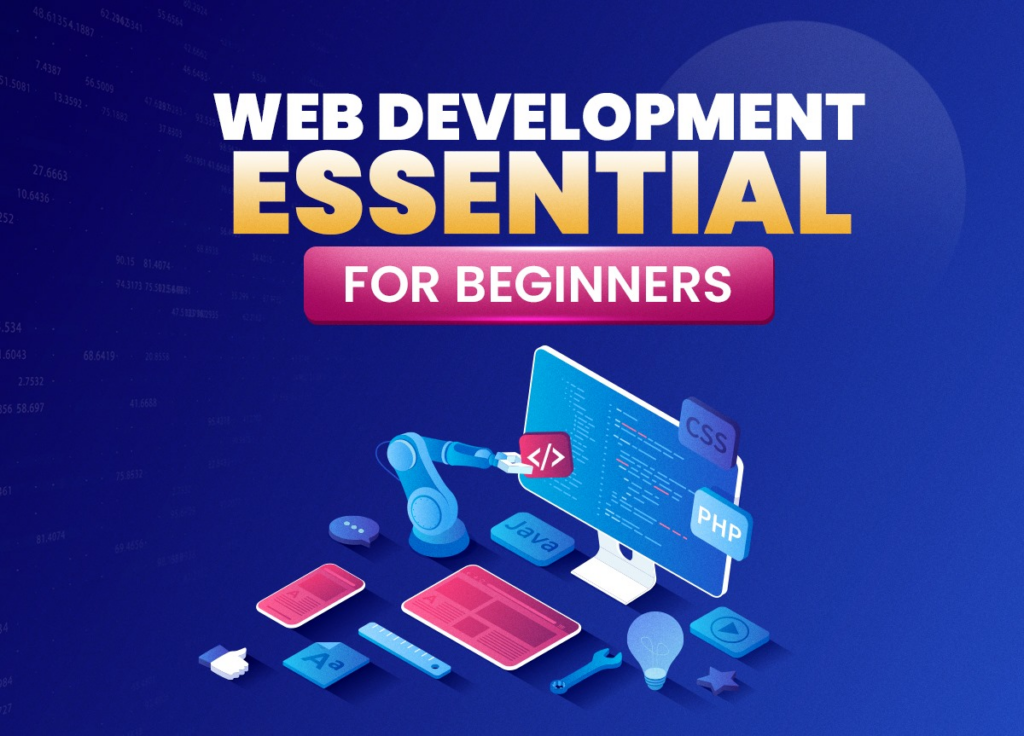Creating an engaging and effective website web Designing requires understanding and applying key web design principles. These principles help ensure that a website is not only visually appealing but also user-friendly and functional. This article will explore essential web design principles focusing on size, spacing, color, alignment, typography, and imagery. By mastering these elements, you can design websites that capture attention and provide an excellent user experience.

1. Size
Size plays a critical role in web design as it helps create a visual hierarchy, guiding users’ attention to the most important elements first. Using size effectively can highlight key information, making it more accessible and easier to understand.
Creating Visual Hierarchy
Visual hierarchy refers to the arrangement of elements in a way that signifies their importance. Larger elements are typically seen as more important and are noticed first. For instance, headlines are often larger than body text to draw the reader’s eye.
- Headings and Subheadings: Use different sizes for headings (H1, H2, H3) to establish a clear hierarchy. The main heading (H1) should be the largest, followed by subheadings (H2, H3).
- Buttons and Calls to Action (CTAs): Make buttons and CTAs larger and more prominent to encourage user interaction.
Responsiveness
Ensure that size adjustments are made for different screen sizes. A responsive design adapts to various devices, providing a consistent and accessible user experience across desktops, tablets, and mobile phones.
2. Spacing
Spacing, also known as white space or negative space, refers to the empty areas between elements on a webpage. Proper spacing enhances readability, reduces clutter, and helps users focus on individual elements.
Enhancing Readability
Adequate spacing between text lines (line height) and around paragraphs improves readability. Crowded text can overwhelm users, making it difficult to read and understand content.
- Line Height: Use appropriate line height to ensure text is easy to read. A line height of 1.5 times the font size is generally recommended.
- Paragraph Spacing: Ensure there is enough space between paragraphs to differentiate them clearly.
3. Color
Color is a powerful tool in web design, impacting the mood, perception, and behavior of users. The right color scheme can enhance the aesthetic appeal, convey brand identity, and improve user experience.
Choosing a Color Scheme
Selecting a harmonious color scheme is essential. Colors should complement each other and align with the website’s purpose and target audience.
- Primary and Secondary Colors: Choose a primary color for the main elements and secondary colors for accents. This creates a cohesive look and feel.
- Brand Colors: Use colors that represent the brand identity. Consistency in color usage reinforces brand recognition.
4. Alignment
Alignment refers to the arrangement of elements in a straight line or in proper positions relative to each other. Good alignment creates order, improves readability, and provides a clean and professional look.
Types of Alignment
- Left Alignment: Commonly used for text, as it aligns naturally with the way people read from left to right.
- Center Alignment: Often used for headings, banners, and elements that need to be the focal point.
- Right Alignment: Less common but can be used for specific design elements to create a unique look.
5. Typography
Typography involves the selection and arrangement of fonts. It significantly affects readability, user experience, and the overall aesthetic of a website.
Choosing the Right Fonts
Select fonts that are legible and appropriate for the website’s purpose and audience.
- Serif Fonts: Have small lines or strokes attached to the end of letters. Often used for traditional and formal websites.
- Sans-Serif Fonts: Do not have small lines or strokes. Commonly used for modern and clean designs.
- Script Fonts: Mimic handwriting and are typically used for decorative purposes.
6. Imagery
Imagery includes photos, illustrations, icons, and other visual elements. High-quality images enhance the visual appeal and can convey messages more effectively than text alone.
Choosing the Right Images
Select images that are relevant, high-quality, and aligned with the website’s purpose and brand identity.
- Relevance: Ensure images support the content and context of the page.
- Quality: Use high-resolution images to avoid pixelation and maintain a professional look.
- Authenticity: Whenever possible, use authentic images rather than generic stock photos. Authentic images resonate better with users.
Enhancing User Engagement
Use imagery strategically to enhance user engagement and guide users through the website.
- Hero Images: Large banner images at the top of a webpage can grab attention and convey the main message.
- Thumbnails: Use thumbnails for galleries or portfolios to provide a preview of the content.
- Icons: Use icons to represent actions, categories, or features. They can make navigation more intuitive.
Conclusion
Understanding and applying the principles of size, spacing, color, alignment, typography, and imagery are crucial for effective web design. These principles help create visually appealing, user-friendly, and functional websites. By focusing on these key elements, you can design websites that not only capture attention but also provide an excellent user experience. Whether you’re designing a personal blog, a business site, or an online portfolio, these web design principles will guide you in creating engaging and effective websites.

